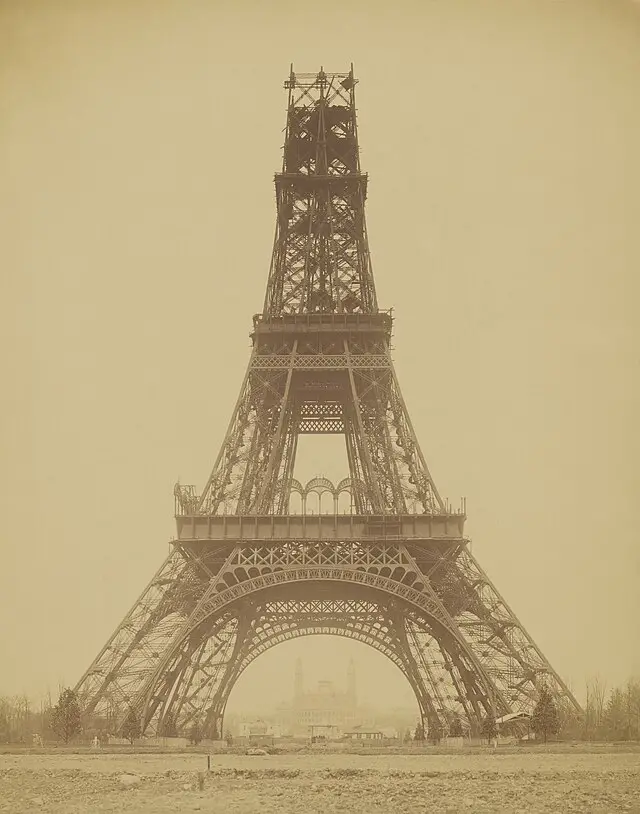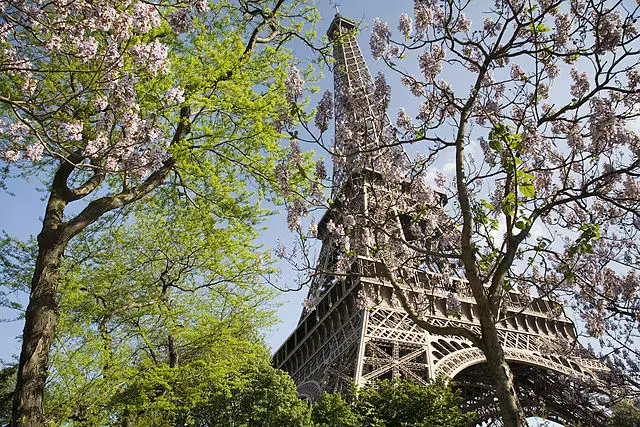Picture yourself walking through the bustling streets of Barcelona. The aroma of fresh paella lingers in the air, waves crash along the shore, and street performers captivate passersby near La Rambla. You turn a corner, expecting to see the grand Sagrada Familia, but instead, a towering iron structure dominates the skyline. The Eiffel Tower—right in the heart of Spain.
It sounds like an alternate reality, but it nearly became true. Before Paris became home to the world’s most famous landmark, Gustave Eiffel had his sights set on Barcelona. But the Spanish city had other ideas.
The Proposal: Eiffel’s Tower Was Meant for Spain First
Before it became the defining symbol of Paris, the Eiffel Tower was just an ambitious blueprint. Gustave Eiffel and his team designed the structure for the 1889 Exposition Universelle, a world fair celebrating the 100th anniversary of the French Revolution. However, Eiffel’s first choice for the project wasn’t Paris—it was Barcelona.
In 1887, he presented his plans to Spanish officials, proposing to construct the 300-meter-tall iron tower as the centerpiece of Barcelona’s 1888 Universal Exposition. Eiffel envisioned a bold statement of engineering, an attraction that would draw visitors from across the world. But the reaction from the city’s leaders wasn’t what he had hoped.

Rejected: Why Barcelona Said “No” to the Eiffel Tower
Despite the tower’s potential, Barcelona’s city officials weren’t impressed. They believed the structure would be an aesthetic disaster, disrupting the city’s architectural harmony. At a time when Barcelona was proud of its rich Gothic and modernist styles, an iron behemoth seemed out of place.
Beyond aesthetics, cost was another major concern. Constructing the tower required a significant investment, and the Spanish government wasn’t willing to allocate the necessary funds. Many also doubted its purpose, dismissing it as a bizarre and unnecessary structure that would have no lasting significance. With these concerns in mind, Barcelona passed on the opportunity, and Eiffel turned his attention to Paris.
Paris Embraces the Iron Giant (Reluctantly)
Though Paris ultimately welcomed the tower, its approval didn’t come without resistance. When Eiffel proposed his project for the 1889 World’s Fair, many intellectuals and artists in France were horrified. Writers like Guy de Maupassant and Alexandre Dumas Jr. criticized it, calling it an eyesore that would ruin Paris’s elegance.
Eiffel, however, was undeterred. He financed much of the construction himself, determined to see his vision realized. When the tower was completed, it stood as the tallest structure in the world, a feat of engineering unlike anything before it. Despite the initial backlash, the Eiffel Tower quickly became an icon, forever changing the Parisian skyline.
What If? A Barcelona Without the Sagrada Familia?
Had Barcelona accepted Eiffel’s proposal, the city’s landscape might look dramatically different today. The Eiffel Tower could have overshadowed the development of Antoni Gaudí’s Sagrada Familia, now one of Barcelona’s most treasured landmarks. Would the city’s distinctive blend of Gothic and modernist architecture have been altered forever? Would the tower have been as revered in Spain as it is in France, or would it have been just another seaside attraction?
By rejecting Eiffel’s design, Barcelona preserved its unique architectural identity, while Paris gained its most famous landmark. The decision shaped the destinies of both cities, leaving us to wonder what might have been.
The Takeaway: One Rejection, One Global Icon
Today, over seven million visitors flock to the Eiffel Tower annually. It stands as a global symbol of romance, engineering brilliance, and human ambition.
But what if Barcelona had said “yes”? Would the tower still carry the same mystique, or would it have blended into the Mediterranean skyline? One thing remains certain—history is shaped by bold ideas and the cities willing to embrace them.
The next time you admire the Eiffel Tower, remember that it was almost never there. And the next time you’re in Barcelona, take a moment to imagine an alternate past—one where an iron giant stood tall over the city, rewriting history as we know it.

